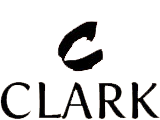|
Explore essential tips and strategies for successful real estate investing in Reno. Learn about the latest market trends, investment opportunities, and property management insights to maximize your returns in Nevada’s dynamic real estate landscape. Understanding the Reno Real Estate Market Dynamics The Reno real estate market has seen a significant transformation over the past decade, driven by economic diversification and population growth. Known as "The Biggest Little City in the World," Reno has evolved from a casino-centric economy to a burgeoning hub for technology, healthcare, and education. This evolution has had a profound impact on the real estate market, making it an attractive destination for investors and homebuyers alike. The influx of major corporations like Tesla, Apple, and Google, establishing data centers and manufacturing facilities in the area, has led to job creation and a boost in local economy. As a result, there has been a surge in demand for both residential and commercial properties. Understanding these market dynamics is crucial for anyone looking to invest or purchase property in Reno. The Appeal of Residential Investments For residential investors, Reno offers a variety of opportunities that range from single-family homes to multi-unit apartment complexes. The consistent increase in population, coupled with a limited housing supply, has led to a competitive rental market with rising rents and low vacancy rates. This scenario presents a favorable environment for real estate investors looking to generate steady cash flow and long-term capital appreciation. Investing in residential properties requires a strategic approach. Key factors to consider include location, property condition, and market trends. Properties in desirable neighborhoods like South Reno or Midtown tend to appreciate faster and attract stable tenants. Investors should also pay attention to the economic forecasts for the area, as these can influence rental demand and property values. Commercial Real Estate: A Growing Opportunity The commercial real estate sector in Reno is also experiencing growth, driven by the expansion of industrial, retail, and office spaces. With the city's economy diversifying, there is an increasing demand for commercial properties that can serve the needs of startups, established companies, and retail businesses. Investing in commercial real estate can be more complex than residential investments. It requires a deeper understanding of market conditions, zoning laws, and the economic landscape. However, the potential returns are significant, especially for properties that are well-located and cater to the needs of the business community. Areas near the University of Nevada, Reno, and the downtown district are particularly promising due to their continuous development and accessibility. Property Management Essentials Whether investing in residential or commercial properties, effective property management is key to maintaining asset value and ensuring profitability. Property management involves a range of activities from tenant screening and lease management to maintenance and compliance with local regulations. For many investors, hiring a professional property management company can alleviate the burdens associated with day-to-day management tasks, allowing them to focus on strategic investment decisions. Good property management can enhance tenant retention, minimize legal risks, and optimize property expenses. This is particularly important in a market like Reno, where the real estate laws and tenant expectations can be quite specific. A professional property manager with local expertise can provide invaluable support in navigating these complexities. Market Analysis and Investment Strategies To succeed in Reno’s real estate market, conducting thorough market analysis and developing sound investment strategies are indispensable. This involves analyzing historical data, understanding current trends, and forecasting future market movements. Key indicators to monitor include median sales prices, rent prices, occupancy rates, and new construction developments. Investors should also be aware of the socio-economic factors that can impact the real estate market, such as changes in employment rates, population growth, and government policies. For instance, recent developments in Reno's tech sector have significantly influenced both the residential and commercial real estate markets. By staying informed and adopting a proactive approach, investors can identify opportunities that align with their financial goals and risk tolerance. This might include diversifying investments across different types of properties, exploring emerging neighborhoods, or capitalizing on properties that offer value-add opportunities through renovations and upgrades. In the next section, we will delve deeper into the specifics of selecting properties, the impact of economic shifts on investment prospects, and strategies for maximizing ROI in the Reno real estate market.  Identifying the Right Properties Choosing the right properties is crucial for success in real estate investment. In Reno, investors should look for properties that not only align with current market demands but also have potential for future appreciation. Factors such as proximity to key amenities, schools, and business districts can significantly impact a property's desirability and rental prospects. Additionally, areas undergoing development or improvement, such as East Reno or areas near major transportation hubs, can be ideal for investments as they are likely to see increased property values over time. When selecting properties, it's also wise to consider the type of property that matches your investment strategy. For instance, single-family homes can offer long-term rental opportunities and typically attract families looking for stability, while multi-family units can offer higher rental yields but may require more intensive management. Economic Shifts and Their Impacts Economic shifts can greatly affect real estate markets, and Reno is no exception. For instance, fluctuations in employment rates, particularly in dominant sectors like technology and logistics, can influence housing demand and rental rates. Additionally, legislative changes, such as those related to property taxes or rental laws, can also impact the profitability and operational aspects of owning real estate in the area. Investors must stay informed about local economic conditions and legislative changes. This can involve subscribing to local economic newsletters, participating in real estate and business associations, or working with local experts who understand the nuances of the Reno market. Maximizing ROI Maximizing return on investment (ROI) in Reno's real estate market involves several strategies:
Building a Real Estate Portfolio Building a robust real estate portfolio in Reno involves more than just acquiring properties. It includes strategic planning, continuous market analysis, and effective financial management. Establishing clear goals and periodically reviewing your investment strategy can help in adapting to changing market conditions and achieving long-term success. Engaging with the Community Successful real estate investment often involves community engagement. By understanding community needs and trends, investors can make more informed decisions about where and what to invest in. Additionally, building relationships with local residents, businesses, and officials can provide insights and opportunities that are not evident through market data alone. Takeaway Investing in the Reno real estate market offers a promising opportunity, given its dynamic economic landscape and growing demand for housing and commercial spaces. By understanding the local market, carefully selecting properties, staying attuned to economic shifts, and employing strategic investment practices, investors can maximize their returns and contribute positively to the region's development. Reno's real estate market, with its blend of residential charm and commercial vigor, is poised for continued growth and remains an attractive option for savvy investors looking to expand their portfolios. Discover key strategies for maximizing your real estate investments in Reno. Learn about property management, house flipping, and long-term investment techniques to build lasting wealth in Nevada's vibrant real estate market. The real estate market in Reno, Nevada, offers a unique landscape for investors seeking to capitalize on property investments. With a burgeoning population and a thriving economic environment, Reno has become a hotspot for real estate investors. This article explores effective strategies for maximizing real estate investments in this dynamic market, focusing on long-term growth and sustainability.
Understanding the Reno Real Estate Market Reno's real estate market is characterized by its diverse opportunities in both residential and commercial properties. The city's ongoing development and infrastructure improvements have made it a prime location for investment. Understanding the trends and factors that influence property values in Reno, such as economic growth, demographic shifts, and housing demand, is crucial for making informed investment decisions. The Benefits of Investment Properties in Reno Investment properties in Reno can offer significant returns due to the high demand for housing and rental units. With a strategic approach, investors can benefit from both rental income and property value appreciation. Key benefits include:
Strategies for Successful Property Management Effective property management is vital for maintaining the value of your investment and maximizing your returns. This includes:
Flipping Houses in Reno: A Lucrative Option? House flipping has been a popular strategy in Reno, especially in neighborhoods undergoing revitalization. However, it requires thorough market analysis and understanding renovation costs. Key considerations include:
Long-Term Investment Strategies For those looking at the long-term horizon, investing in rental properties or commercial real estate can be particularly rewarding. Strategies for long-term investments include:
Real Estate Investment as a Legacy Investing in real estate is not just about immediate returns; it's also about building a legacy. Many investors in Reno are motivated by the prospect of creating lasting wealth that can be passed down through generations. This involves:
The Reno real estate market presents numerous opportunities for savvy investors. By employing effective investment and management strategies, individuals can maximize their returns and build a lasting legacy. Whether you're a seasoned investor or new to the market, understanding the nuances of Reno's real estate landscape is key to success. Discover how investing in Reno's dynamic real estate market with Conde Houses can help build your legacy. Explore strategic investment advice and expert property management services. Reno, Nevada, a city known for its vibrant arts scene and booming tech industry, is also a prime location for real estate investments. With its growing population and economic diversity, Reno offers unique opportunities for investors looking to build or expand their real estate portfolios. In this article, we will explore the benefits of investing in Reno real estate, the key considerations for potential investors, and how partnering with Conde Houses can help you manage and grow your property investments effectively.
The Appeal of Reno Real Estate Reno's real estate market has been on an upward trajectory, driven by its economic resilience and strategic location near major markets like San Francisco and Silicon Valley. The city's ongoing development projects and infrastructural enhancements make it an attractive spot for both residential and commercial investments. Why Invest in Reno?
Strategic Investment with Conde Houses: Conde Houses specializes in helping investors navigate the Reno real estate market with expert consultancy and comprehensive property management services. Whether you are new to real estate investments or looking to expand your portfolio, Conde Houses provides the knowledge and resources needed to make informed decisions. Investment Strategies for Success:
Property Management with Conde Houses Effective property management is crucial for maintaining the value of your investment and maximizing your returns. Conde Houses offers tailored property management solutions that include tenant screening, maintenance, and compliance with local real estate laws, ensuring your investments are well-managed and profitable. Investing in Reno real estate offers a promising opportunity to build a legacy of wealth. With the right strategies and a trusted partner like Conde Houses, you can maximize your investment's potential and enjoy the benefits of a growing market. Contact Conde Houses today to learn how we can help you achieve your real estate investment goals in Reno. Whether you're buying your first property or expanding your portfolio, our expertise will guide you through every step of the process. For many adults contemplating a return to academia, the financial implications can be daunting. House flipping emerges as an innovative solution to this challenge. This guide aims to equip you with essential strategies for successful house flipping, positioning it as a practical means to fund your educational journey. It delves into effective techniques and practices in the real estate realm, enabling you to finance your academic pursuits while engaging in a lucrative venture.
Conduct a Thorough Property Inspection The cornerstone of a successful house flipping venture is a meticulous property inspection. This critical step illuminates hidden defects and potential issues, providing a clear picture of the investment ahead. It's about being proactive in identifying possible challenges and calculating the associated costs, which are crucial in making informed financial decisions. This approach mitigates risks and paves the way for a more secure investment. Acquire Properties at Optimal Prices New Silver notes that securing properties at a lower cost is fundamental in house flipping. This involves identifying properties in need of renovation or those that are undervalued due to various circumstances. Mastery in negotiation and patience in finding the right deal are essential. This practice ensures a higher profit margin, making the venture an effective tool in funding your education. Establish a Robust Plan and Timeline Effective planning is a key ingredient in any successful business venture, and house flipping is no exception. Developing a comprehensive plan, including a realistic timeline, is imperative. This plan serves as a strategic roadmap, guiding your decisions and helping you stay on budget and on schedule. It's about setting clear objectives and milestones, ensuring that each step contributes to the overall success of the project. Prioritize Kitchen Renovations In preparing a house for the market, the kitchen often plays a pivotal role. Adding features, such as modern appliances and a range hood to remove odors, can substantially increase a property's value. A well-designed kitchen not only appeals aesthetically but also serves as a functional centerpiece of the home, making it a crucial aspect of any renovation project. Understand and Target Potential Buyers Milesbrand points out that a deep understanding of your target market is crucial in real estate. Different demographic groups have specific needs and preferences. Tailoring your property to meet these expectations can significantly increase its appeal and market value. It involves researching market trends and buyer preferences, ensuring that your property stands out in a competitive market. Explore Partnership Opportunities The complexities of house flipping can be eased through partnerships. Sharing the financial and operational responsibilities with a like-minded individual can be beneficial. It allows for the pooling of resources, expertise, and networks, enhancing the potential for success. This collaborative approach can also provide moral support, making the journey more enjoyable and manageable. Balance Academic and Business Commitments Combining education and house flipping can be challenging but ultimately rewarding. Flexible online degree programs offer a solution, allowing you to learn at your own pace and align your studies with your business commitments. For instance, you can pursue rewarding cybersecurity programs, which complements your real estate activities. This strategic approach enhances both your academic and professional profiles, offering dual benefits in your career journey. You’ll learn many aspects of IT and network defense strategies. House flipping offers a unique avenue for adults seeking to fund their return to education. By adopting these strategic measures, you can navigate the real estate market with confidence, turning house flipping into a viable financial resource for your academic ambitions. It requires careful planning, market knowledge, and adaptability, but the potential rewards extend beyond monetary gains. This endeavor not only paves the way for educational success but also provides valuable life and business skills, contributing to your overall personal and professional growth. Image via Freepik As a renter, you may often want to spruce up your living space without committing to permanent changes or spending a fortune. It's a common challenge to want a personalized touch in a rental that feels temporary. Fortunately, there are numerous budget-friendly and completely reversible ways to upgrade your living space to give it a fresh, personal feel. This article from Isaac Conde shares some practical ideas that can transform your rental into a cozy and stylish haven without breaking the bank.
Seeking Inspiration from Local Properties Sometimes, the best inspiration comes from exploring other homes and rental properties in your area. Check out local listings and open houses to gather ideas for your own space. Some sites let you search by home layout, price, amenities, and other categories. You can also use online tools to find similar listings and design inspirations. This can help you visualize potential upgrades and how they might look in your own rental. Revitalizing with Removable Wallpaper Removable wallpaper is a fantastic way to change your space dramatically. It’s easy to install and just as simple to remove when it's time to move out or change designs. With a wide range of patterns and colors available, you can choose a style that truly reflects your personality. This simple addition can instantly elevate the look of any room, making it feel more like your own. Upgrading with Peel-and-Stick Tiles Peel-and-stick tiles are a game-changer for kitchen and bathroom upgrades. They are durable, easy to apply, and can dramatically change the appearance of your space. Whether you want to add a backsplash in the kitchen or refresh the bathroom floor, these tiles offer a hassle-free solution. The best part is, when it's time to move, you can simply peel them off without any damage. Defining Spaces with Area Rugs Area rugs are perfect for adding warmth and color to your living space. They help define different areas within a room, such as a dining or sitting area, and can be a focal point of your decor. With various sizes, patterns, and textures available, you can choose a rug that compliments your style and furniture. Plus, they're easy to roll up and take with you to your next home. Enhancing Ambiance with Curtains and Blinds The addition of curtains and blinds can significantly impact the ambiance of your rental. They offer privacy and light control and add a touch of elegance or coziness, depending on your style choice. Look for options that are easy to install and remove, such as tension rods or clip-on brackets. This simple upgrade can greatly affect how your space feels and looks. Organizing with Adhesive Hooks Adhesive hooks are a renter's best friend for organizing and decorating without leaving marks. They are ideal for hanging everything from art to kitchen utensils and are easily removable without damaging the walls. This makes them perfect for adding personal touches to your space while keeping things organized and tidy. Plus, they're affordable and can be found in a variety of sizes and styles. Privacy and Style with Temporary Window Film Temporary window film offers a unique solution for adding privacy and aesthetic appeal to your rental. It's simple to apply and just as easy to remove, making it ideal for renters. You can choose from a range of designs, from frosted to patterned, to enhance the look of your windows while maintaining privacy. This is especially useful in areas like the bathroom or street-facing windows. There are many reversible and budget-friendly ways to upgrade your rental property. From removable wallpaper to temporary window films, each option allows you to personalize your space without permanent changes or a hefty price tag. Get creative and enjoy the process of transforming your rental into a space that feels uniquely yours. These tips will allow you to turn your rental into a comfortable and stylish home. Would you like to read more helpful content or learn about our leading real estate services? Visit CondeHouses.com today! Image via Freepik |
Isaac Conde
305 West Moana Street Suite C Reno, NV 89509 775-553-8805 B.S. 0143661 ROI
All
|
305 West Moana Street
Suite C
Reno, NV 89509
775-553-8805
B.S. 0143661
Suite C
Reno, NV 89509
775-553-8805
B.S. 0143661







 RSS Feed
RSS Feed


